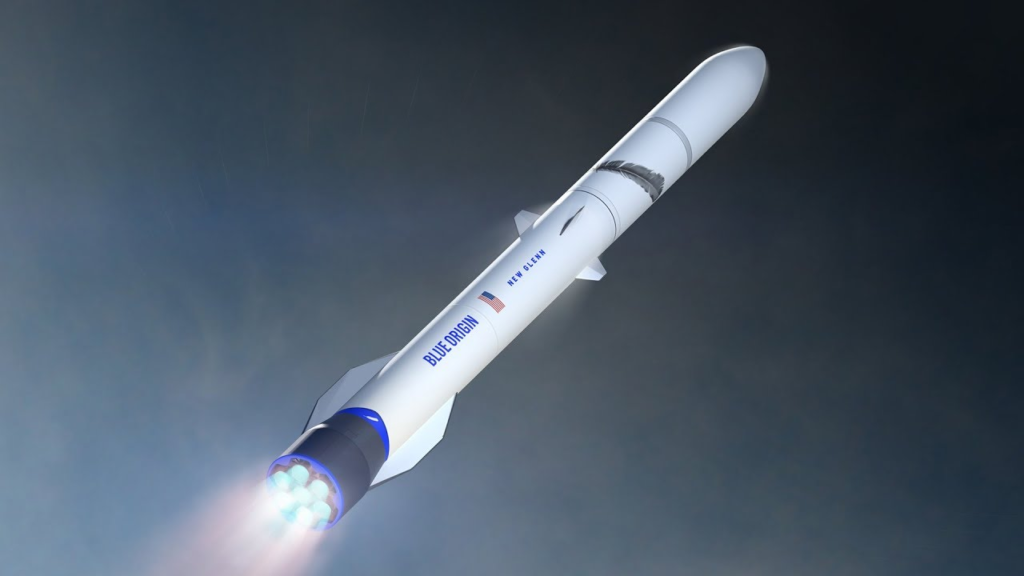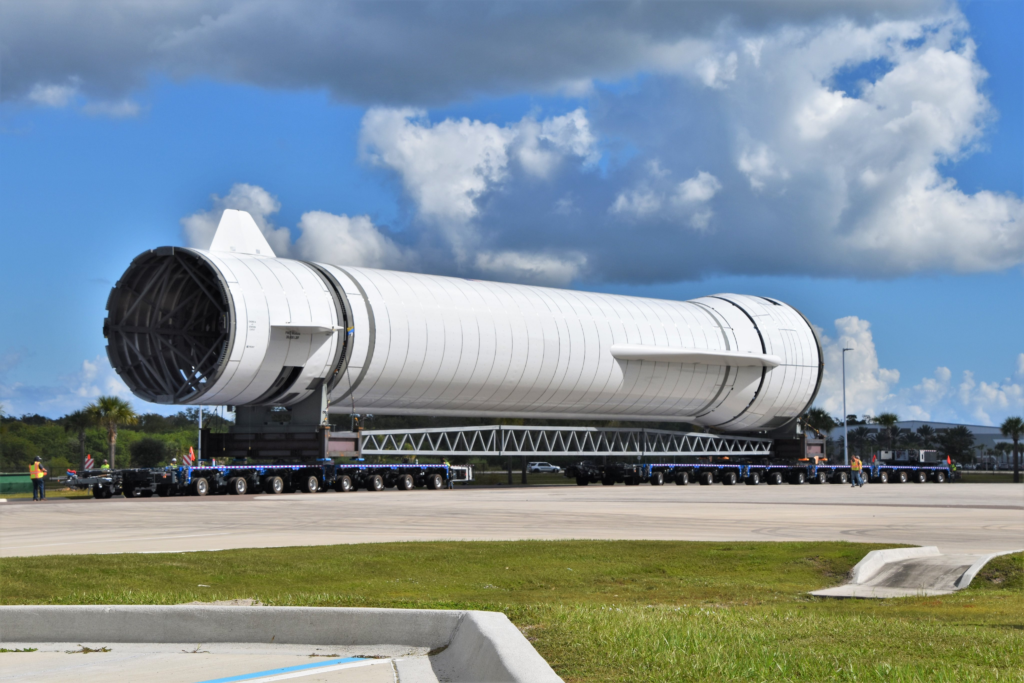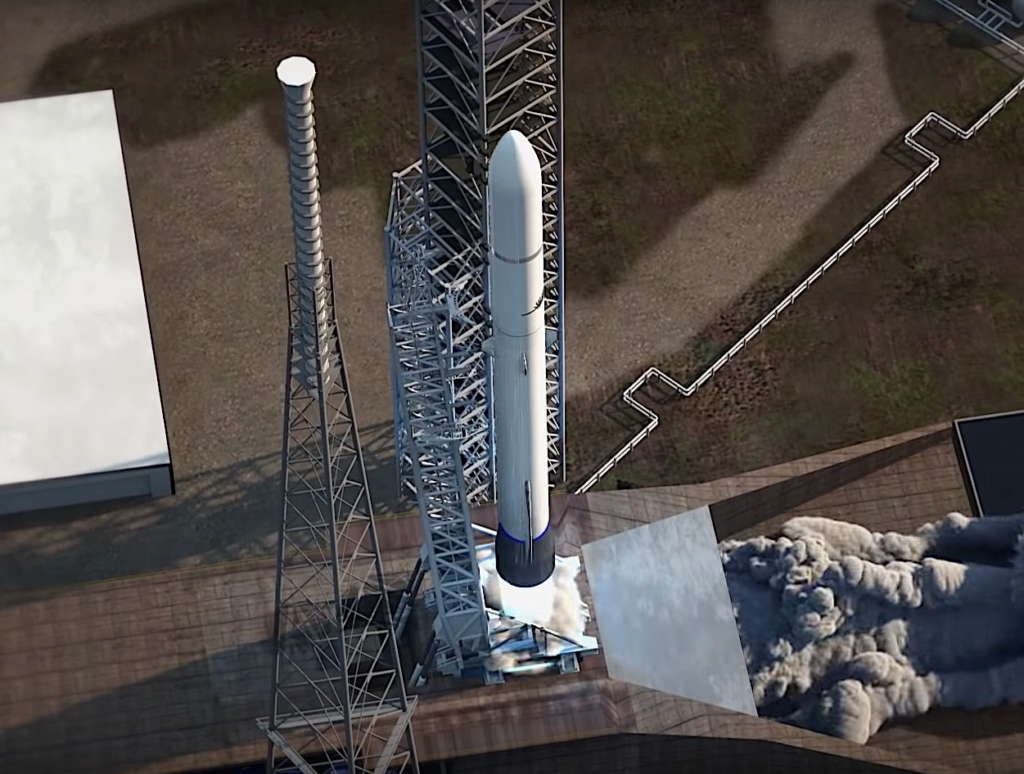
New Glenn Testing In Preparation For Its First Launch
New Glenn is a reusable next generation heavy lift launch vehicle under development by Blue Origin. For years now the rocket has been going through design, manufacturing, and testing, in preparation for an initial flight. Despite the long history, Blue Origin has not been able to progress on the system as quickly as they had hoped. Combine this with Blue Origin rarely sharing information on the rocket and it’s not often that we learn what’s going on.
Thankfully, in the past few weeks, a few different reports and images have come out shedding light on the progress and some of what the company is working on. This includes new images of New Glenn test tanks, BE-4 engine production, and NASA contracts, just to name a few. All of which is a good sign as they continue to work toward a maiden flight. Here I will go more in-depth into new information on the rocket, a realistic launch date, what to expect in the coming months, and more.
New Glenn Progress

To start off, only a few days ago on the 26th, SpaceCoastPictures managed to snap a few images of what looks like a New Glenn upper stage flipping vertically. The image of the tank vertical in the bay looks to be a regular New Glenn second stage. It also resembles project Jarvis which was a project to develop a fully reusable upper stage for New Glenn. One part of this effort is focusing on developing a stainless steel propellant tank and main structure for the second stage rocket, and evaluating it as a part of a solution for a complete second stage system. Back in 2021, Blue Origin had rolled a stainless steel test tank to their Launch Complex 36 facility, on which ground pressure testing with cryogenic propellants could begin. All this being said, it’s very likely that this tank we see in the images is a standard expendable upper stage that will soon go through some testing. While Blue Origin is considering a reusable upper stage, that would be years in the future and they will start partially expendable. Besides that, very little information is known about this tank and what exactly the company’s plans with it are.
In addition to work on physical tank sections, we got an update on a significant ramp up in BE-4 engine production. Earlier this month on the 19th, Blue Origin tweeted saying, “The regen nozzle room in our Huntsville engines factory.” This included a video going through the factory where 10s of BE-4s in early production can be seen. New Glenn will use 7 of these engines on each booster stage. While the booster is reusable, there are guaranteed to be a few failed attempts. In preparation for testing, a lot of BE-4 engines are going to be needed as the company begins to launch this rocket and make new boosters. Back in October of last year, the company said in a statement, “Dozens of these engines are now in production to support a large and growing demand for civil, commercial, and defense launches.” Ideally, based on the video and other information, the company will have plenty of BE-4 engines to test and destroy along the way.
Another update that may or may not be directly related to New Glenn has to do with a new facility. Two days ago Eric Berger tweeted pointing out, “Blue Origin is opening an office in Phoenix, Arizona, where it plans to hire hundreds of people to “support the development of next generation spacecraft.” Specifically, the new 43,288-square-foot office will contribute to avionics, systems engineering, and supply chain management across Blue Origin’s programs. In a quote, the Senior Vice President of Strategy, Marketing, and Sales, at Blue Origin said, “Blue Origin is thrilled to invest in the Valley and open our site in Phoenix, which offers a vast amount of aerospace engineering and manufacturing talent and excellent universities and trade schools statewide. This partnership will accelerate our mission to reduce the cost of access to space resources for the benefit of Earth.” Other than this broad information, it’s unclear exactly what this new facility and large workforce will be developing.
Some believe it has to do with Project DARPA. In this case, around two years ago, the Defense Advanced Research Projects Agency selected Blue Origin and Lockheed Martin to develop competing spacecraft concepts for a demonstration of nuclear thermal propulsion. Something we will have to keep an eye on in the coming months.
Launch Date

With all of these updates and work in mind, it brings up the question of when can we expect to see New Glenn lift off for the first time. Last we heard from Blue Origin, the company was targeting a launch in late 2024, however, realistically, we should expect a launch closer to 2025 or later. In reality, the company still has a lot of work and arguably the most important factor, New Glenn is a very complex system. Between the booster reuse on a droneship, the size, and its unique design, New Glenn is quite the undertaking. It also doesn’t necessarily help that Blue Origin is going from New Shepard, a rocket a fraction of the size that doesn’t reach orbit, to one of the biggest rockets in the space industry. Despite all of this, Blue Origin is confident in its timeline and the future of this system.
In relation to the future launch date, earlier this year in February, NASA’s Launch Services Program (LSP) awarded Blue Origin’s New Glenn the Escape and Plasma Acceleration and Dynamics Explorers (ESCAPADE) contract. ESCAPADE is part of the NASA Small Innovative Missions for Planetary Exploration (SIMPLEx) program; it is a dual spacecraft mission to study Mars’ magnetosphere. Providing launch service for ESCAPADE is a task order under NASA’s Venture-Class Acquisition of Dedicated and Rideshare (VADR) launch services contract. Blue Origin was on-ramped to the NASA VADR launch services Indefinite Delivery Indefinite Quantity (IDIQ) contract on January 26, 2022, with a five-year period of performance.
Most interestingly, the mission is scheduled to happen in late 2024. However, this late 2024 launch date brings up a lot of questions. Due to the fact that this is a Mars mission, if the launch date is missed, the next opportunity will be around two years later in late 2026. This has to do with ensuring Earth and Mars are aligned in a way that minimizes travel times and expenses. Ideally, this would not be the case but VADR missions are higher risk so it could happen. The other possibility is that NASA genuinely believes Blue Origin will be capable of a mission to Mars with New Glenn in less than two years from now. Using the information we have access to, this seems extremely unlikely due to the amount of testing and development necessary prior. On the other hand, NASA has access to a lot more behind the scenes information and could be confident based on what they have seen that New Glenn is actually making very fast progress. Something to consider when looking at New Glenn’s progress and future.
When the first launch of New Glenn does eventually happen, it will likely be quite the spectacle. Originally New Glenn’s booster was supposed to land on a converted cargo ship that was turned into a mobile landing pad. Blue Origin ended up scrapping the ship and idea and reports soon came out that they were working with the same company as SpaceX did for drone ships. During this landing operation, after stage separation, the booster will use its fins, strakes, and BE-4 engines to reorient, position itself, and land on the floating platform. The four forward fins are actuated aerodynamic control surfaces used for attitude adjustment during descent and landing of the first stage. Toward the bottom, two wing-like strakes provide lift and cross-range for the reusable first stage as it flies back to Earth.
For the engine, Blue Origin highlights that BE-4 was designed from the beginning to be a medium-performing version of a high-performance architecture. It was a conscious design choice made to lower development risk while attempting to meet performance, schedule, and reusability requirements.
As far as the images of the tank section, the second stage is an expendable LOX/LH2 stage with dual gimballing BE-3U engines with 1,060 kN (240,000 lbf) total thrust in vacuum. The stage also has a tank diameter of 7 m (23 ft) and uses common tooling with the first stage to reduce recurring cost. The length of the second stage tank is 16.1 m (52.9 ft) and the overall length including the two high expansion ratio nozzle BE-3Us is 23.4 m (76.9 ft). Similar to the first stage, the second stage has aft, mid, and forward sections. The aft section consists primarily of the two BE-3U engines, associated load bearing cross-bar thrust structure, and tankage/equipment for long duration operations. The reaction control system (RCS)/settling system uses tri-axial thrusters distributed in four places along the thrust structure. The second stage aft section integrates with the first stage forward section and provides one of two second stage umbilical interfaces. The mid-section contains all propellant tankage including a forward LH2 tank and an aft LOX tank, separated by a common insulated bulkhead. In the coming months, Blue Origin will continue to work on the system and hopefully share more information on exactly what progress is being made.
Conclusion
Blue Origin has been busy working on New Glenn and its various systems. Even though the company rarely shares information on the rocket, we got a few updates in the last few weeks giving us some insight. If successful, New Glenn could play a significant role within the industry and large launch. However, before that point, Blue Origin has a lot of work left. We will have to wait and see how it progresses and the impact it has on the space industry.
